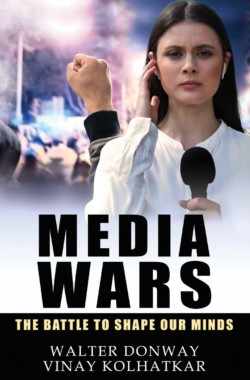Was America in the 1950s Approaching Utopia?
As a writer on political philosophy and politics, and a novelist and admirer of Ayn Rand’s Atlas Shrugged, I have thought about what happens after the end of Atlas Shrugged, when John Galt declares that the strikers have won, the way is clear, they are going back. Rand’s much earlier novel, Anthem, has the hero and heroine on their own, far from collectivist dystopian civilization.
Could I imagine a sequel to Atlas, imagining in detail the utopia the strikers create from the wreckage of America? If someone has written it, I have not come across it. Fortunately, Atlas Shrugged does not end without telling us what is perfect—and by what standard. The principles of morality, the nature and role of law, the framework of a constitution banning initiation of force, and the economic implications, laissez faire capitalism, are all clear.
After the strikers have dealt with a collapsed, starving, darkened, chaotic America, what kind of society would emerge?
I am grateful that I do not have to imagine the supposed utopia that would arise from those ideas. After the strikers (I have no idea how) have dealt with a collapsed, starving, darkened, chaotic America, what kind of society would emerge? I think many young readers of Atlas imagine a sort of technology park, writ large, with ubiquitous tech jobs, sexy homes and hot cars, and men and women living a life unencumbered by marriage or children. Would the new utopia be California in its heyday, at its best? I find it difficult to imagine.
Although a novelist steeped in Romanticism and Objectivism, I recoil from the challenge to imagine this society. Would this utopia resemble any of the hundreds of future and futuristic civilizations imagined in science fiction novels? Would it be a “brave new world” but without the irony?
Would it be middle-class, rooted in traditional family life, focused on upward mobility by education?
Or would it, like all successful societies that have existed under capitalism, be bourgeois? That is, would it be middle-class, rooted in traditional family life, focused on upward mobility by education and intergenerational savings, and, above all, taking care of its business, which would be the business of making a living?
I lived in a society that to my knowledge was the freest, most optimist, most moral, and even the happiest in history.
I lived in a society that to my knowledge was the freest, most optimist, most moral, and even the happiest in history. When the 1950s began in the United States I was six years old. I lived on a farm in a small town in Massachusetts. My father, a second-generation American of Polish descent, educated with a great struggle, owned a department store in Worcester. Yes, my nuclear family of a mother, father, and four children was solidly middle-class.
In the decade of the fifties, America had emerged triumphant from a war to destroy national socialism in Germany and Italy. It was the productivity of capitalism in America that defeated socialism in Europe with the scarcely credible speed of production and output of weapons, ships, planes, and everything else. The same productivity supplied the Soviet socialist dictatorship with what it needed to survive to fight its twin, German national socialism. The same genius of capitalism created the bomb that ended the fanatical war in Asia by the Japanese militaristic dictatorship.
When it was over, this capitalist productive system, with company after company becoming world famous, came to be called “the consumer society.” It was no such thing; it was society in a mighty growth spurt to become middle-class, including unionized workers, with wealth that enabled mass marketing of every new luxury. What existed in the fifties was the freest economy in the history of the world. The “workers” that Karl Marx had predicted would sink lower and lower into wage slavery became prosperous and middle-class. It was this American experience, above all, that made a laughingstock of the predictions of Marxism.
(As an aside: This was not the theoretical high-water mark of “laissez faire,” which probably was the 1870s or 1880s when American productivity under economic freedom stunned the world; when the United States, starting from scratch, overtook Great Britain as the wealthiest nation on earth.)
In the fifties in America, an entire nation rose toward the middleclass. There were bitter struggles. From the South came millions of blacks escaping the economic and cultural aftermath of the feudal-agrarian society of the old Confederacy. In the North, they encountered both opportunity and prejudice. No one said joining the middleclass was easy.
What made the fifties a utopia—the bourgeoisie society of science, self-interest, capitalism, and even including mounting concern with injustices—was not perfect fairness for all. It was the expectation that effort, work, would make things better.
What made the fifties a utopia—the bourgeoisie society of science, self-interest, capitalism, and even including mounting concern with injustices—was not perfect fairness for all. It was the expectation that effort, work, would make things better. Small businesses were creating prosperity by making entrepreneurship local, and the astonishing giants of manufacturing were penetrating everywhere with foods, cameras, toys, cars, miraculous entertainment on the airwaves, vaccines, air travel priced for everyone….
The new vision of society shared via television presented prosperity as normal, the family as secure, education and not labor as the business of children, the freedom to have a marriage chosen without coercion, and the freedom to think and talk and read and write—simply the freedom to try to be one’s best. Yes, the society of the “Lassie” family, “Leave it to Beaver,” “Father Knows Best,” “Bonanza.”
It was in the fifties that the enlightened Rosa Parks refused to give away her seat on a bus, and a class action against the Board of Education won a landmark judgment. While equality at law for blacks was not accomplished till 1965, it was amidst the culture of the fifties that the movement for equal rights began.
However, nothing, perhaps is closer to the essence of bourgeois civilization than focus on family. With that focus went the elevation of higher education into an almost universal aspiration. Resources for higher education achieved both unheard-of capacity and diversity of types of institutions. With the focus on family also came the investment in “home making”; it was the decade that saw labor-saving devices become commonplace for the first time in history. And, finally, the family car became the key to an entirely new degree of freedom, travel, and privacy.
But the same bourgeoise culture, its imagination seizing upon the implications of man liberated to fight for his values, created heroes of freedom and justice: Davy Crockett, Superman, Paladin, Mike Hammer, Perry Mason, James Bond, and the Untouchables. It was a floodtide of popular Romantic art that celebrated the optimism of the times: good triumphant, justice triumphant. The message: We can prevail, the world is ours to win.
The same decade saw Ernest Hemingway and John Steinbeck win the Nobel Prize in Literature. And new classics such as Catcher in the Rye, Fahrenheit 450, Native Son, the Invisible Man, Exodus, and, of course, Atlas Shrugged.
This utopia arose on the philosophical foundations of freedom and capitalism. That enabled the fifties to offer a rare value in human life. Other nations in other centuries had known many “good times” always followed by the catastrophes of war, revolution, dictatorship, famine, and plague. But the 1950s in America felt normal and permanent. It was the gift of sustained freedom and progress: the longest stretch under constitutional, democratic government in mankind’s experience. We were living in the ideal society, and—perhaps for the first time in history—enjoying the assumption that this was simply the way life is.
In retrospect, therefore it may seem astonishing that Atlas Shrugged appeared in 1957 and became an intellectual obsession. How was America ready for this brilliant projection of the catastrophe toward which anti-reason, collectivism, statism, and socialism were leading America?
By the 1950s, philosophical collectivism and socialism in practice had swept the world: the communist revolution in Russia in 1917, national socialism in Germany in the 1930s, New Deal socialism in America in the same decade, communist dictatorship across Eastern Europe in the wake of WWII, and half-a-billion Chinese under the murderous, madcap rule of Mao. Everywhere, economic freedom, all freedom, was submerging under the totalitarian socialist tidal wave.
In less than a decade, American bourgeois utopia witnessed its cherished colleges and universities—supported by the media—violently demonstrating for utopias of metaphysical “equality,” “brotherhood,” and “liberation.” Consumerism” became the dirtiest word of the decade. In song, every value of the 1950s was scorned and belittled. It was as though decades of philosophical sapping, undercutting bourgeois society, had been completed. The 1960s was a decade of collapse of optimism, confidence, and moral certainty. Now, all was self-doubt, violent division, and bohemian assault. The banners were promiscuous sex, scorn for family, alarm at the risks of “consumerism,” city riots and burning justified in the name of racial equality, and a wave of counterculture grunge and obscenity in literature, on Broadway, in popular music.
What had happened? The assault on American utopia was the culmination of a long-brewing challenge to the philosophy of the eighteenth-century Enlightenment and Age of Reason, which made America possible and climaxed in the utopia of the 1950s. The challenge was the counter-Enlightenment spawned by German philosophy: anti-reason, anti-individualism, collectivist opposition to self-interest, and statist opposition to capitalism. Working for centuries, it yielded the fruits of Marxism and Nazism in Europe. In America, starting in the late nineteenth century, it gradually took over the academic and intellectual worlds just as America was staking its future on a huge investment in higher education. It climaxed in America with its challenge to everything for which the fifties utopia stood.
It had been the first utopia for the masses, the common man, the American family. It had stood for science and technology, the practicality of education, determination that the “Free World” would prevail, the primacy of earthly happiness, inevitability of material prosperity, and the affirmation of other widely shared values such as family, community, and country.
It was utopia as we knew it. It was the way we lived.
And it may be, once more, when the strike is over, and we go back to the world.
« Politicians Want to Box Us into Tribes The Best Vaccination against the Pandemic of Deceit »










